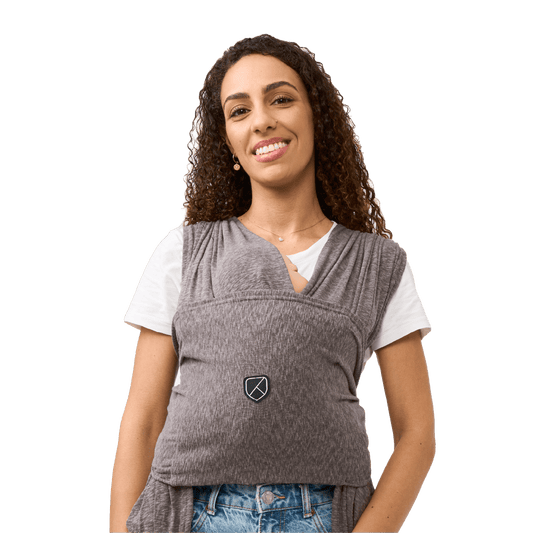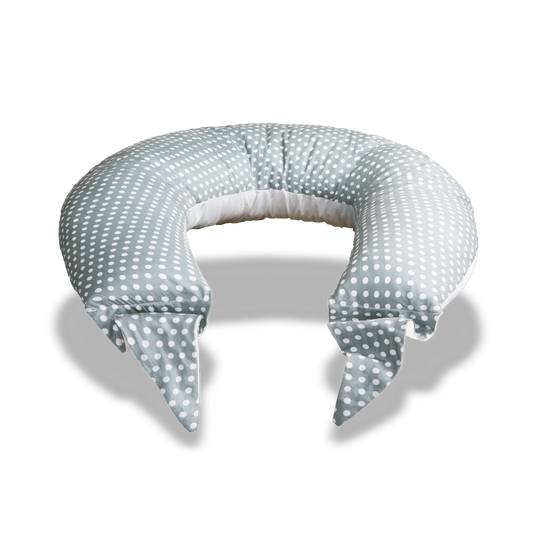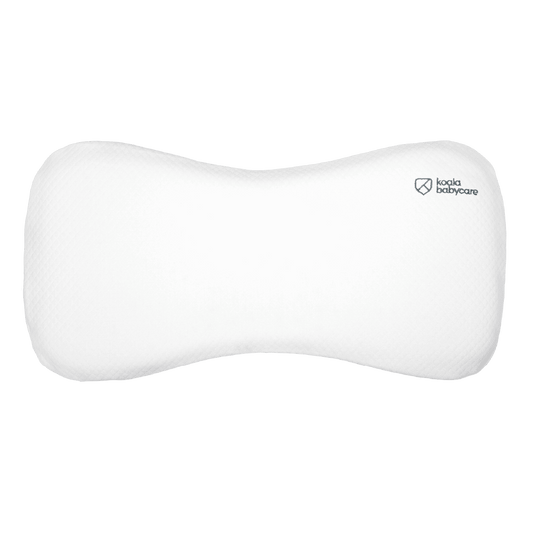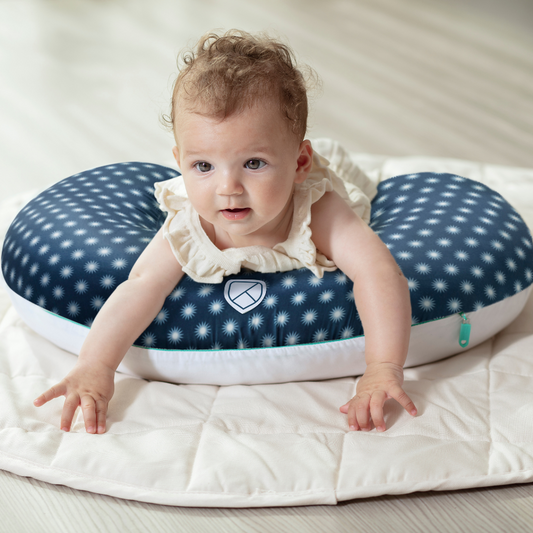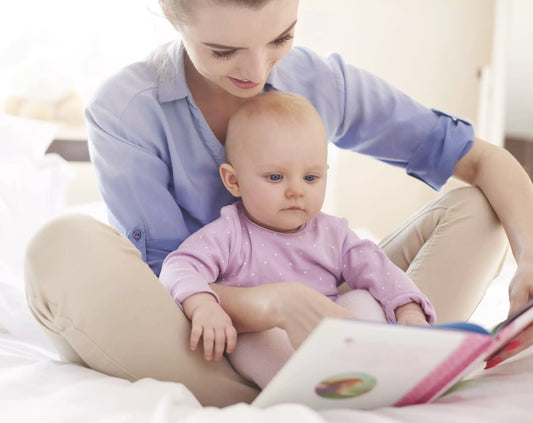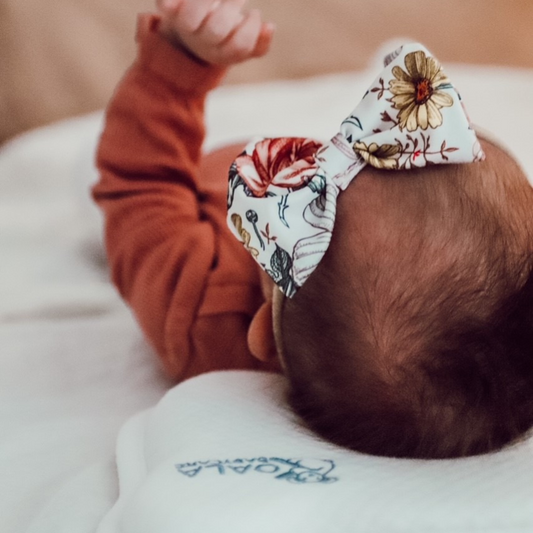The importance of engaging your baby in activities, starting from the first few months of life, has been common knowledge for quite some time now. Play, at this stage, is a way to stimulate your infant's cognitive development early on.
The importance of play and early stimulation have been known for some time: the first three years of life are vital for the development of 80% of neural connections.
It is, therefore, important not only to respond to the primary needs of infants and provide them with physical and emotional affection, but also to stimulate them with age-appropriate activities. Obviously, this happens inside the family context.
This is why the World Health Organisation has included early stimulation through play and activitieswith parents as part of its guidelines on supporting children's development.
Bearing this in mind, what are the best play ideas and activities for a baby aged between 0 and 18 months? We explore the answer in the following paragraphs.
4 important activities for 0 to18 month-old babies
There are quite a few key activities which can stimulate your baby’s cognitive and motor abilities during those first months of life. Below is a list of the ones we feel are the most important.
1. Playmat and Tummy time
First and foremost, create a “corner” in your home where your baby can move around freely and safely. This is where, with mummy’s and daddy’s help, they will begin to explore the world from.
One of the positions which you should gradually introduce your infant to is Tummy Time; in other words, playtime whilst lying on their stomachs, which supports motor development.
It’s difficult for babies to remain in this position, so we help them by using a few tricks, such as:
- Koala Hugs multifunctional pillow: resting the baby’s chest and arms on the pillow and encouraging them to keep their head up.
- A small mirror: where the baby and parents can look at their reflection and play a sort of peekaboo in the mirror.
- Specific books for Tummy time: you can find a selection of colourful picture books on the market for babies within this age group, they help to capture and hold their attention, thus, motivating them to stay in this position.
Over time babies will acquire new movement skills. From this point onwards, it’s important to place toys on the mat when the infant is lying on their backs to encourage them to stretch out towards them. Place the toys close enough so they can see them but not too close, this will motivate them to reach out.
2. Manipulative play
Manipulative play is undoubtedly another key activity to do with your baby from when they are just a few months old.
It is often believed that this type of play should be introduced at a later stage, however, during the first three months you can place small toys near their hands to stimulate your infant’s senses a little bit, for instance: using rings. All a baby needs to do is simply open their fingers to try to touch and hold the object.
By doing this, they will soon improve their hand- eye coordination skills, and this will enable them to reach out towards objects which are further away, with the goal being for them to actually grasp the item.
Around six months, infants can learn to handle several stimuli at once, this is also thanks to them being able to sit. We can then give them solid objects to hold on to so that their little hands get a feel for the shape of the toy.
This is the stage when we can also introduce wooden toys.
3. Cause & effect activities
Cause and effect activities are very important as they form the basis for the development of our child’s logical abilities when they are older.
What exactly does this mean? Encouraging play with toys which produce a noise, for example rattles, right from the first few months.
By doing this, babies will begin to understand, that movement, albeit initially involuntary, produces noise. They will soon realise that it is an actual effect resulting from their own action.
They will then move on to initiating a voluntary action: grasping and shaking the rattle to make a noise.
As time goes by, they will develop increasingly complex cause-effect competences. This will allow them to use more motor patterns to achieve a goal. For example, they will throw the famous wooden cubes we mentioned earlier down from the highchair to produce a noise.
4. Reading
Last, but certainly not least in order of importance, is reading.
Books can be introduced to children at around 7 months. We are obviously speaking about books specifically designed for such an early age. They have one picture per page, which the parent can identify and name.
They are vital for the development of focused attention and language development.
At around 10 months, you can introduce books which have several pictures per page. Parents can point out and describe each picture and then ask their baby to identify certain items. This will help the baby to develop visual search skills from a page.
Reading will, subsequently, move on to books which contain small scenes accompanied by phrases.
Through reading we increase our child's attention span and stimulate them with a greater morphosyntactic complexity present in the significance of the words in the book.
As we’ve seen, playing with our children is not only fun but also useful! The important thing is to know is which are the most stimulating activities right for their age.
![]()
Dr Chiara Dellatomasina and Dr Elisa Riboni - Neuropsychologists
Dr Chiara Dellatomasina and Dr Elisa Riboni are two psychologists and neuropsychologists from Milan. They graduated in 2008 in Cognitive Neuroscience from San Raffaele University Milan and then went on to specialise in paediatric neuropsychology and psychotherapy. They currently work in hospital and in private practice. They are experts in cognitive and emotional development of children, perform assessments and devise treatment plans, and provide specific guidance to parents.


